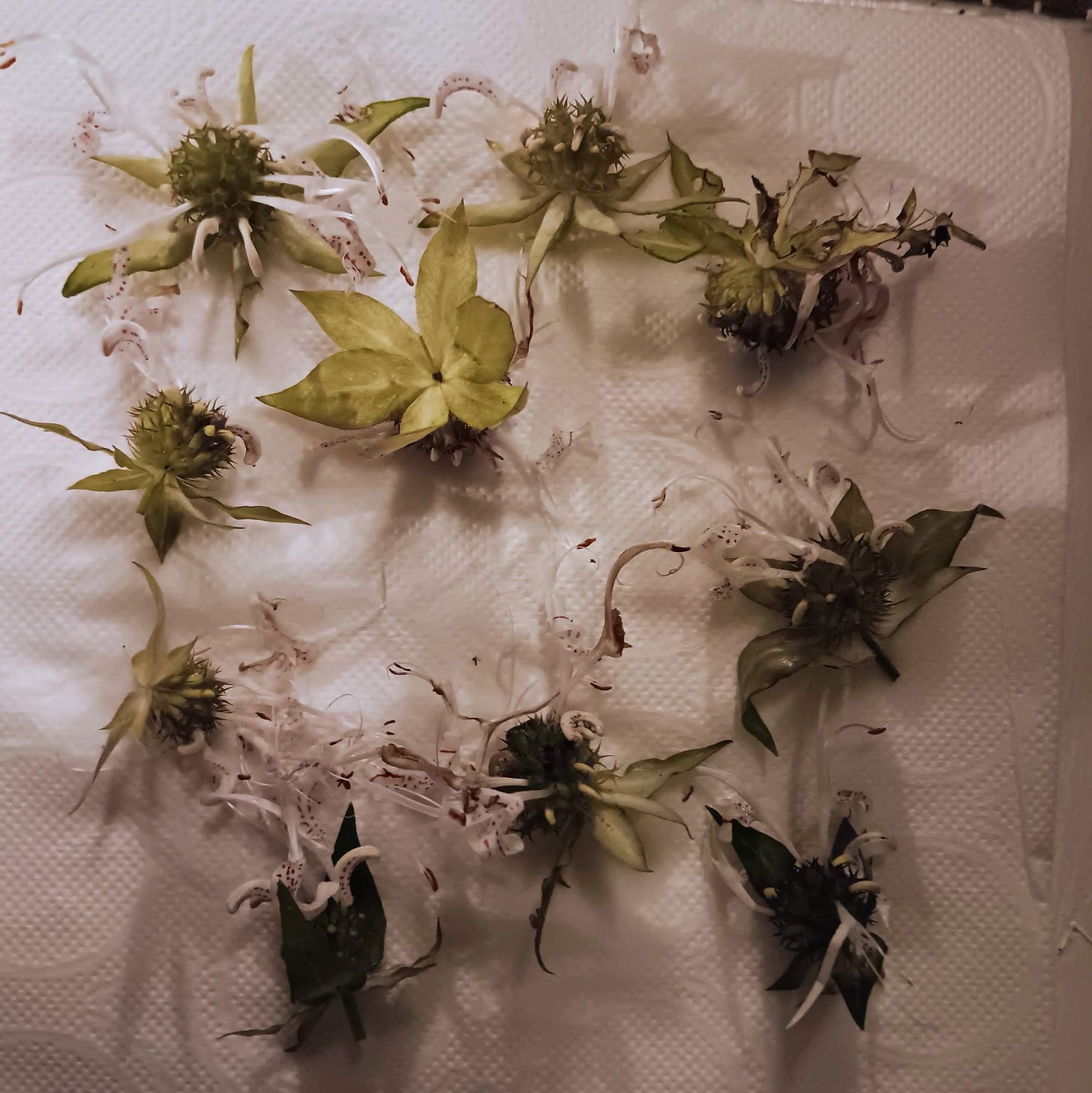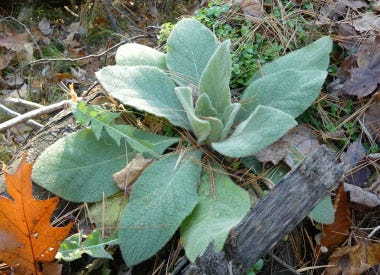Welcome to the living herbarium (herbarium = hortus siccus in Latin, meaning dry garden), where we will journey through the world of herbal specimens, select herbs to grow in your garden, learn to harvest and collect seeds, forage, and build confidence to craft simple herbal remedies. Herbariums have been around since at least the 1540’s and are, by definition, “a physical collection of plant samples preserved for long-term study and analysis”.1

Our herbarium is similar, only living and growing— a space to collect and store knowledge of herbs, and it can— and should— be accompanied by your very own physical, living herbarium. Your wild plant index is a perfect companion to have on this journey as you explore wild and cultivated herbs and get to know them better. Throughout this series, I will go over everything from which herbs you should explore/grow and why, how to start growing them, when and how to harvest them, different ways of preserving them, saving seeds, and how to use them as ingredients in food, tea, and medicine.
In this first part of the living herbarium series, I want to talk about why you should grow your own herbs and help you figure out which herbs you want to grow.
Why You Should Grow Herbs
There are plenty of reasons to grow your own herbs. To start, buying fresh herbs from a grocery store, especially if organic, becomes expensive very quickly. Growing your own will save you money, especially if you want them pesticide-free. Secondly, it’s easy, so why not try it? Herbs can succeed in a wide variety of growing environments. Whether you have one small windowsill or an entire garden, you can grow plenty of herbs successfully. Third, there is almost no barrier to entry with growing herbs. All you need are seeds, some dirt, and a few pots. Particularly if you are new to gardening and are intimidated about where to begin, growing herbs is a perfect starting point. If you’ve got an established garden, herbs make perfect companion plants for your other crops. Last, growing herbs works wonders for your gardening confidence. An experience like nurturing an oregano plant from tiny seed is a truly rewarding and emboldening experience.
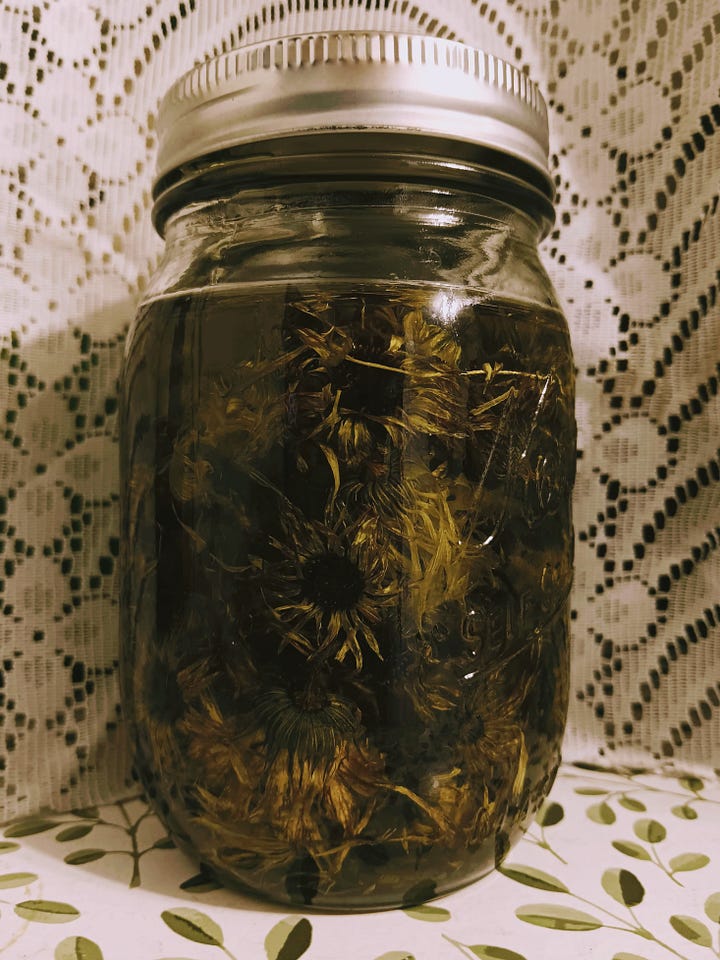
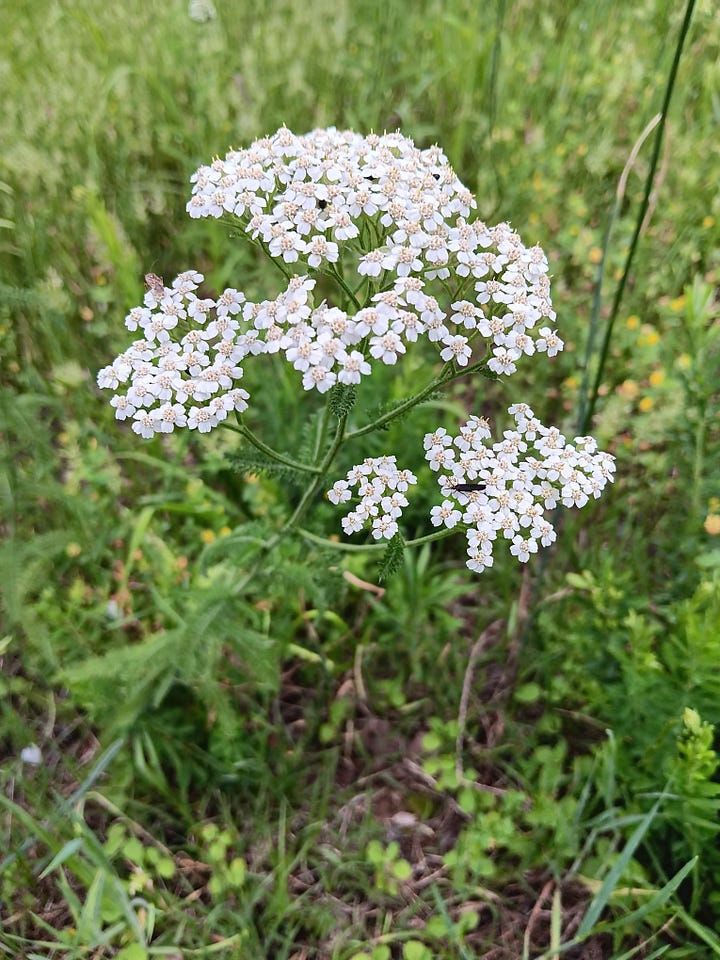
Creating a Living Herbarium
(Selecting your Herbs)
Why do you want to grow herbs? Is it the first step in creating a vegetable or herb garden? Do you want fresh herbs on your windowsill to incorporate into meals? Are you interested in learning to craft herbal remedies at home? Will you focus on solely on cultivating your own herbs or are you more interested in foraging wild herbs? Once you have your “why,” your “what” will become easier to determine. Select one or two herbs you are inclined to grow and learn as much as you can about them. As you go, make sure to add your research to your plant index or start a deck of note cards that you can look back on later.

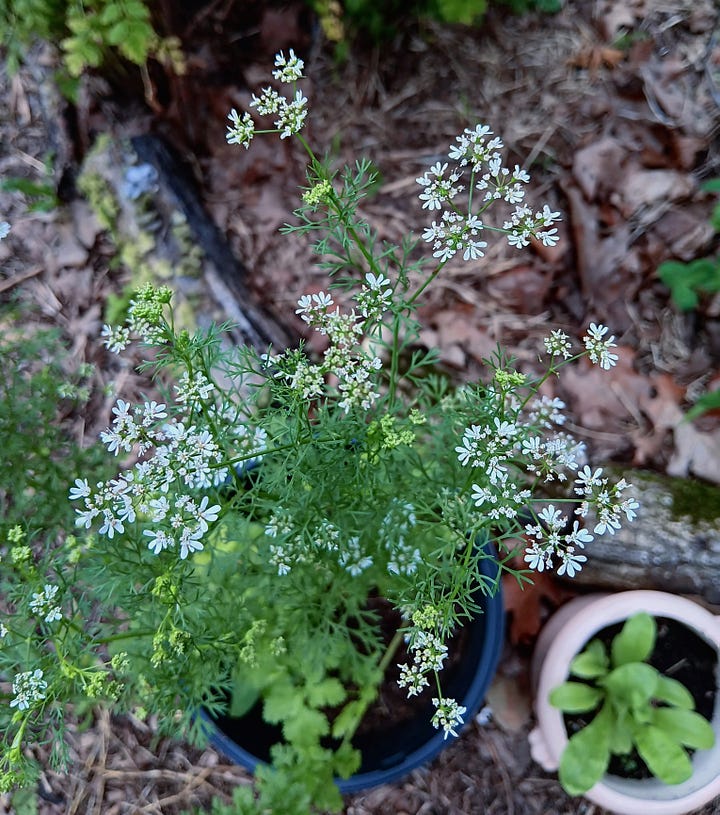
There are many ways to categorize herbs to help you figure out what to grow. In my mind, herbs live in one of these categories: herbs for cooking and baking, herbs for tea, and medicinal herbs. Of course, herbs in all of these categories can move into any or all of the other categories, but this helps me narrow down where to start when choosing the first herbs to grow. Don’t overwhelm yourself early on, think about one or two herbs you want to start with. Are you interested in using herbs in your meals, perhaps fresh basil for pasta or fresh mint for a Mediterranean yogurt sauce? Do you love a good cup of tea and want fresh chamomile or lemon balm at the ready? Or are you interested in crafting herbal remedies for bug bites, headaches, or cold season?
And— if you’re not ready to grow your own herbs but want to learn about the easiest herbs to forage, I’ve also included some resources for you. Some really good advice I received early on about foraging edible herbs is to focus on one unfamiliar plant at a time. Starting with easily recognizable wild plants is important to building confidence with foraging.
If you love this post but don’t want to commit to a paid subscription, you can support my work by “buying me a coffee” by clicking the button above. Proceeds will go directly into the farm, always. One million thank-yous for your support, monetary or otherwise.
Now, let’s dive into some herbs you should consider growing:
Herbs for Cooking
Fresh herbs can truly elevate the flavor of a meal. Some of the herbs in the “cooking” category are among the easiest to grow.
Basil— There are many different varieties that vary in taste, such as Genovese, lemon, cardinal, anise, Thai, and holy basil. Basil may be the single most simple herb to start from seed and maintain. It can live happily indoors or outdoors.
Oregano— Part of the mint family, oregano grows prolifically and is easy to start from seed. Oregano is one of the herbs I find most delicious, especially in Mediterranean or Italian-style dishes and salad dressings.
Parsley— Grows easily indoors or outdoors, easy to start from seed, biennial
Cilantro— Very similar to parsley, seeds produced can be collected, ground up, and used as the common spice “coriander”— two herbs in one!
Dill— Dill is a gorgeous flower in the garden and a great companion plant for tomatoes and more. If you want fresh dill pickles or want to spice up your sauces, consider growing dill.
Chives— Chives may compete with basil as the easiest herb to grow either indoors or outdoors. Chives can be added to salads, dressings, or baked into savory breads.
Sage— Sage is said to be a little more difficult to cultivate, but I have had great success with little effort when growing sage. For me, it has done well both indoors in a pot with other herbs as well as in the garden. Sage is delicious and can be dried or used fresh in meals or in tea.
Thyme— In the mint family, thyme grows well in pots or will take over as ground cover in the garden. It is a tasty addition to meals and even has medicinal properties such as helping with respiratory distress when brewed as a tea.
Fennel— Used in many Mediterranean, Indian, and other cuisines, fennel is a perennial herb (though it is grown as an annual in cooler climates) that grows best outdoors. The seeds can also be eaten and are excellent at aiding digestion, especially that of spicy foods.
Rosemary— A fragrant, woody perennial, rosemary doesn’t require excellent soil or much water and really thrives on neglect more than other herbs.
Dandelion— Not just a nuisance for suburban lawns, dandelions make great foodstuffs. All parts of the plant are edible! Its flowers can be used in salads or baked into sweet treats, its leaves can be added to a salad, and its root can be boiled as a caffeine-free coffee alternative.
Herbs for Tea
Tea herbs definitely cross over into the medicinal herb category, since tea is medicine. The herbs listed in this category are among the more commonly used herbal tea ingredients.
Mint— Extremely versatile, adaptive, and delicious, be aware that mint grows rapidly through rhizomes in the ground and will quickly cover an area of your garden or yard. Some people are fine with that, others find it a nuisance. If you are part of the latter group, it’s easily resolved by growing it in a pot, indoors or outdoors.
Lemon Balm— In the mint family, lemon balm has a subtle lemony-mint flavor and has a similar growth pattern to mint. It can help alleviate gastrointestinal distress and anxiety, especially when paired with other soothing herbs.
Lavender— Native to the dry climate of the Mediterranean, lavender thrives in poor soil with excellent drainage, plenty of sunlight, and very little water. It is one of my favorite herbs to add to tea and baked goods.
Chamomile— I cannot overstate my love for chamomile. Its dainty white and yellow flowers, the sweet smell and taste of the fresh flowers, the way it is an excellent companion for most other crops, and its soothing properties when brewed make it one of my favorite herbs overall. It is pretty easy to grow, but definitely prefers to be in-ground rather than in a pot in my experience.
Catnip— Another member of the mint family, catnip isn’t just for cats! It’s a soothing, relaxing herb for people too and is super easy to grow.
Herbs for Medicine
There are so many more medicinal herbs to know than just the ones below, but these are a good place to start.
Valerian— I’m growing my first valerian plants this year. It is a beautiful sight to behold and has a very potent vanilla, floral, yet uniquely pronounced earthy scent. The roots, harvested after flowering when the plant is dormant, have a… different scent… possibly described as “dirty gym socks”… however, when dried and blended with other sweeter, more fragrant herbs, valerian is a powerful calming herb for anxiety and muscle tension. *If you take any prescription drugs, please check with your doctor about contraindications before consuming valerian root.
Mullein— In many places, mullein is considered an invasive plant due to its easily dispersed seeds that grow vigorously in open fields and on roadsides. Around here, we don’t view it as a nuisance because it is easy to harvest it before it goes to seed, and it’s useful as herbal medicine. Steeped in a tea or as a tincture, mullein helps relieve acute respiratory distress. If you choose to cultivate mullein, it prefers dry, nutrient-poor environments and requires almost no attention whatsoever.
Feverfew— If you suffer with chronic migraines like I do, you may consider growing feverfew. When used in a tea or tincture, feverfew has been reported to ease migraine symptoms.
Echinacea— Also known as coneflower, echinacea has been used for centuries to boost the immune system. It can be cultivated and is a biennial plant, but it also grows wild in many areas across the world.
Yarrow— One of many umbellifers, yarrow grows wild across the world. It likes dry hillsides or open fields particularly well, as it needs very little water but a good amount of sun. Many gardeners cultivate yarrow from seed because it is very pretty and pollinators love it. It can be eaten or brewed in a tea, but it is often used topically on the skin. Its fresh leaves can be gently crushed and used as a poultice for cuts, burns, or bruises. Its leaves and flowers can be infused in oil as an ingredient in salves and balms too.
Calendula— This was the first flower I grew successfully in our community garden several years ago and I have a deep love for this warm, bright flower because of the confidence it gave me to grow food and flowers. Calendula is used in skin and hair products for its soothing, healing quality. I keep homemade calendula salve on-hand most of the time for anything from dry skin to bug bites.
Annuals, Biennials, & Perennials
In addition to your intent of use for the herbs you grow, you should consider a few other factors like your limitations on space, growing conditions, and how much time and energy you are willing to expend. Something really great about herbs is that they are, in large part, extremely adaptable. They can thrive in whatever amount of space you give them however small or large and they do not require large amounts of nutrients or sun.
Most of the herbs mentioned here are annual plants, meaning that they only live for one year and will need to be replanted each year. Annual herbs include basil, cilantro, and dill, to name a few. The downside, for me, about annuals is that they need to be replanted every year if they’re grown outside because our winters get quite cold. Saving seeds each year helps save money, and I’ll talk more about saving seeds of annual plants for replanting in a future installment of the herbarium series. If you’re growing indoors, many “annuals” can be grown as perennials.
If a plant is perennial, it often has a hardy, woody stem like rosemary, mint, or lavender. They may require some pruning before going dormant for the winter, but they will produce new growth each year and live on for many years if they’re cared for.
A biennial plant is one that grows for two seasons before going to seed but doesn’t live on after that. In a biennial’s first year, they establish a strong root system and grow their leaves. In the second year, they focus their energy on flowering, eventually producing seeds and dying. Parsley and borage are biennial.
Easiest Herbs for Beginners to Grow
If you want to start growing herbs but you don’t know where to begin— start here!
Chives, basil, and mint are among the easiest herbs to grow. Chives and basil are incredibly simple to start from seed and tend to have great germination rates. While mint is easy to start from seed, some people may find it much easier to propagate it from a cutting.
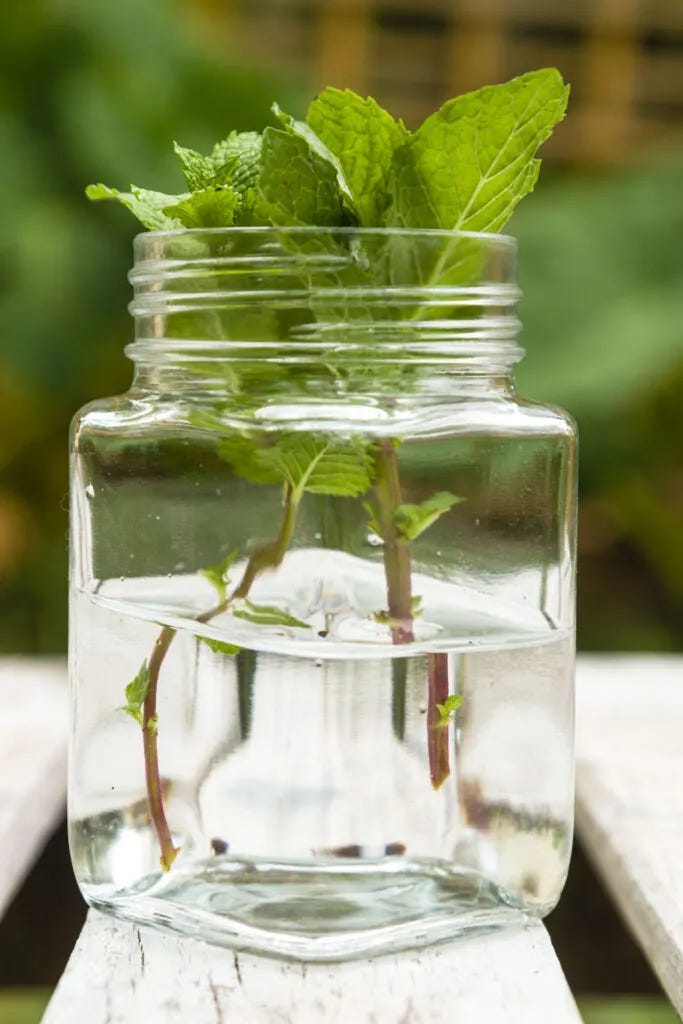
I will dive deeper into starting herbs from seeds and/or cuttings in the next installment of the Living Herbarium series.
Easiest Herbs for Beginners to Forage
I believe that mullein, yarrow, and dandelions are the three easiest herbs for beginners to forage. It is easy to confidently identify each of these, they grow prolifically and are not in danger of overharvesting, and they come back each year. Like I mentioned earlier in this post, it is helpful to focus on learning all you can about one wild plant at a time. Don’t overwhelm yourself or dive right into looking for morel mushrooms or ramps— instead, focus on something that’s easy to find and easy to identify. Find some good, reputable foraging books and pack them in your bag when you’re out hunting.
I recently had the pleasure of embarking on a foraging walk and talk, guided by an experienced local forager. As we walked around, he pointed out greenbrier, hackleberry, gooseberry, and wild garlic and talked about how to forage responsibly, how to identify these plants, and when to forage for which plants in our area. The best part was that the workshop ended with everyone working together to make a meal using a native herb called dittany, a massive chicken of the woods mushroom, foraged sumac, wild candied pecans, and more. He also spoke about what he brings when foraging: a sturdy bag, a pair of snips, plastic bags for keeping greens fresher, a digital camera, a sheet for laying out under a tree (lay it out beneath the tree and give a branch full of fruit a good shake), and some storage jars.
Practice responsible foraging— don’t take plants that have any possibility of having been sprayed with chemicals, only take what you will eat, and respect the personal property of others (don’t take other peoples’ plants without asking).
Afraid of Failing?
Often we let fear of failure keep us from diving into something we want to do that we’ve never done before. I think gardening is one of those things for many people. Fortunately, growing herbs has a very low cost to entry and an even lower risk. Foraging for wild herbs is actually free, it just takes time an patience. Failure is a critical part of gardening, foraging, and pretty much anything else worth doing. Without failure, you may never learn how to best care for your plants. If you’re interested in growing herbs, figure out what you want to grow and meet me here next time in part two of the Living Herbarium Series.
We will dive deeper into the process of starting your herbs and how to care for them, so stick around and subscribe to get that upcoming letter directly in your inbox.
Cheers,
Allyson
If you love this post but don’t want to commit to a paid subscription, you can support my work by “buying me a coffee” by clicking the button above. Proceeds will go directly into the farm, always. One million thank-yous for your support, monetary or otherwise.
https://www.floridamuseum.ufl.edu/herbarium/methods/herbaria/





